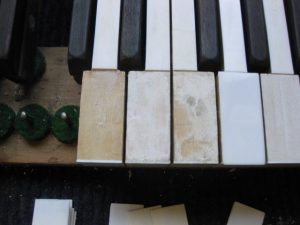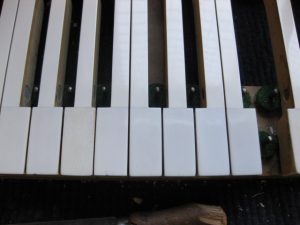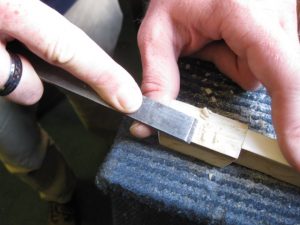
Challen grand piano front Ivory key tops unstuck
From Mrs P in Canvey Island, her Challen Baby grand unfortunately caught up in the most recent sporadic torrential rain falls we’ve seen in Essex for some time.
Not so much the flooding to her conservatory that caused the problem, but the industrial dryers the insurers unleashed before moving the piano to a safe environment, this resulted in a sudden change in humidity, causing her ivories to come unstuck from the keys.

Ivory key tops come in two pieces
Ivory generally comes in two pieces, a front rectangle piece joined to a long piece, where you can just make out the faint line.
This is how you can tell if your piano has Ivory keys (pre 1950’s) now plastic, although I should mention that piano keys are actually made of wood, the key top is the bit on top! But I’m sure you’ve worked that out already.
Andy! to the rescue on this next bit.

Key top preperation
It is important that the key top seats properly so as not to appear raised once glued.
To feel a join while playing your piano is not desirable, and “totally unacceptable workmanship!” says Andy. He’s a fussy one is our Andy. But he does an excellent job!
